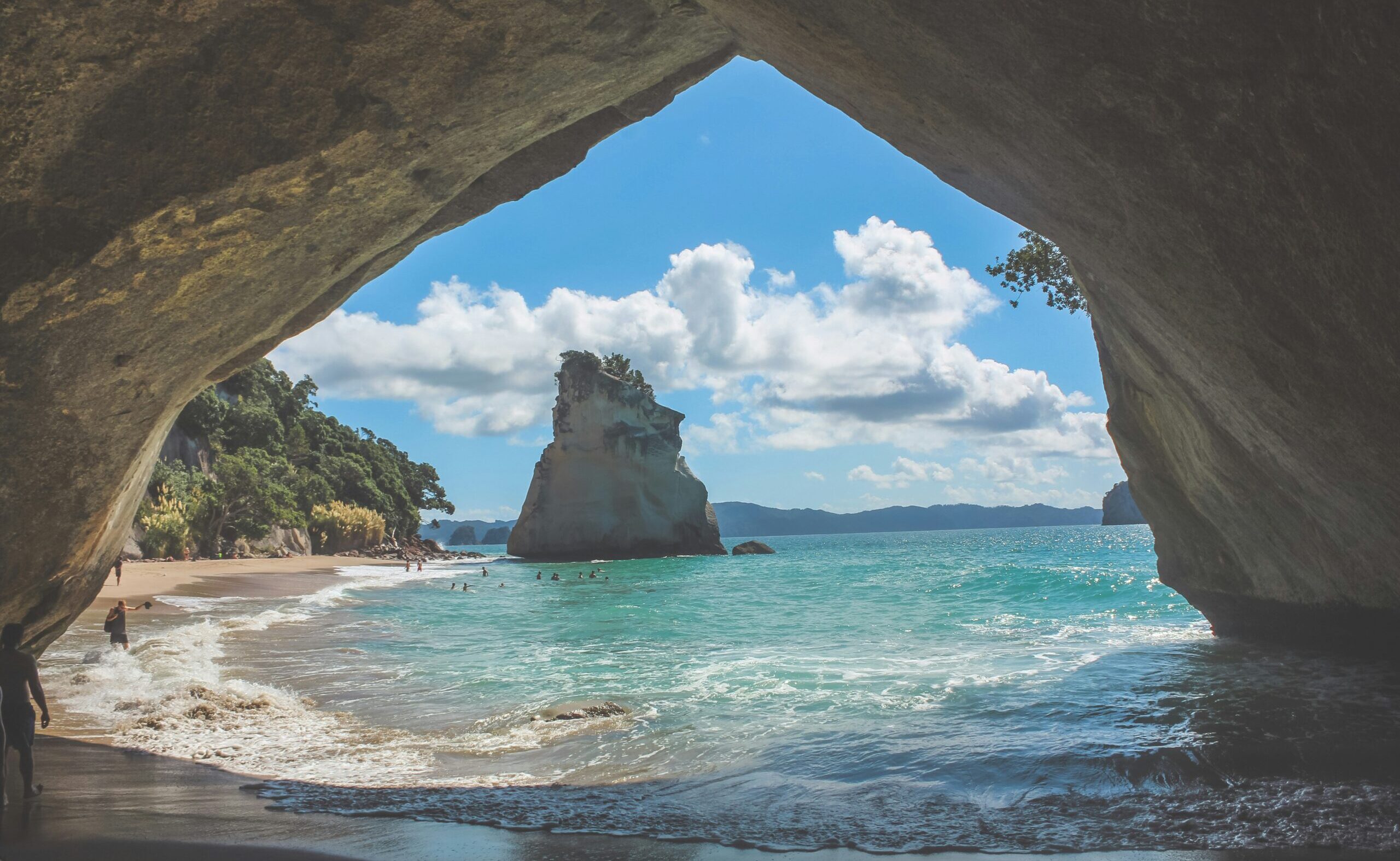The Hauraki Gulf Tīkapa Moana Marine Protection Bill is due for its third reading in Parliament this week.
The Bill extends protections of current marine reserves in the Hauraki Gulf Marine Park, including at Cathedral Cove, as well as adding new protected areas.
The SMC asked experts for background on the aims, history, and expected impact of the Bill.
Professor Conrad Pilditch, Director of the Institute of Marine Sciences, University of Auckland, comments:
What is the Hauraki Gulf Tīkapa Moana Marine Protection Bill and what does it do?
“The Hauraki Gulf Tīkapa Moana Marine Protection Bill is the product of a large collaborative effort over almost 10 years from mana whenua, community groups, environmental groups, researchers, industry and government officials. It provides long overdue protection in some areas of the Hauraki Gulf.
“The new legislation expands the existing marine reserves at Cape Rodney – Okakari Point (Goat Island) and Te Whanganui-o-Hei (Cathedral Cove), establishes 12 Highly Protected Areas where most fishing is prohibited, and 5 Seafloor Protection Areas that ban bottom-contact fishing.
“It also expands the diversity of the Gulf’s habitats and ecological communities now protected from direct and local human disturbance.”
Why is the legislation needed?
“Everyone who is familiar with the Hauraki Gulf knows it is in trouble – ecosystem health has been deteriorating for decades. This has been clearly demonstrated in the State of the Gulf reports produced by the Hauraki Gulf Forum. Many of us have seen first-hand the impacts on the Gulf from overfishing, climate change, and increasing inputs of pollutants from land. Although New Zealand is behind many countries when it comes to marine protection, this legislation is a welcome first step.”
What are the strengths and weaknesses of the legislation?
“Strengths:
– It’s great to get protection for new habitat types that are not already protected in the Hauraki Gulf.
– It’s exciting to see the Goat Island Marine Reserve quadruple in size. We expect this added protection will allow the marine environment to regenerate even further to a whole new level.”
“Weaknesses:
– The inclusion of some commercial fishing in the High Protection Areas is disappointing and undermines the effectiveness of the protections.
– New Zealand has promised to increase its marine protection to 30% by 2030. Currently, we fully protect less than 1% of our marine area and unfortunately this legislation doesn’t change that figure substantially.”
What impacts will the Bill have on people who love fishing?
“Although small areas will be closed to fishing, our research shows marine protection can benefit fishers. For example, the large snapper in the Goat Island marine reserve produces up to 10 times more juvenile snapper across the wider Hauraki Gulf than unprotected areas of similar size.”
Will the legislation help the Hauraki Gulf recover?
“We know from the Goat Island marine reserve that protecting key predators like snapper and rock lobster helps stop our kelp forests from turning into kina barrens, and boosts fish populations inside and outside the reserve.
“Protecting our seafloor from disturbance is critical to ocean health, so I am glad to see some soft sediments habitats protected. Marine soft sediments make up 50% of the earth’s surface and perform vital functions for life on the planet such as recycling nutrients to sustain productivity, removing contaminants, and locking away carbon into long term storage.
“Restoring marine environments can help buffer against climate change and its impacts. By strengthening ocean resilience through marine protection, ecosystems are better equipped to withstand shocks and recover from adverse events. Marine protected areas act as an insurance policy—helping to reduce the cumulative effects of land use, fishing, and climate change, while also supporting sustainable economic activity.”
Conflicts of interest: Conrad Pilditch receives funding from Department of Conservation, MBIE, regional councils and PROs. He is affiliated with the Mussel Reef Restoration Trust and the Whangateau Catchment Collective.
Associate Professor Fiona McCormack, Anthropology Programme, University of Waikato, comments:
What does this bill achieve?
“The Bill extends two existing marine reserves and creates 12 high-protection areas and five seafloor protection areas to support ecosystem recovery.”
What larger issues in the Hauraki Gulf does this bill aim to solve?
“It is the result of a decade of research and advocacy work from mana whenua, marine scientists and other stakeholders seeking to protect biodiversity in line with New Zealand’s commitment to protecting 30% of its oceans by 2030. The gulf is plagued by exotic Caulerpa, a pest seaweed forming large underwater fields, kina barrens, habitat loss and local fisheries depletion.”
How has the bill changed since its inception?
“In the original form of the Bill, high-protection areas were designed to prohibit commercial and recreational fishing but allow customary fishing by tangata whenua. The recent amendments, however, open up commercial ring-net fishing, an off-shoot of purse seine fishing, in three of the high-protection areas. While the number of ring-net fishers permitted is small, questions arise as to why commercial interests were prioritised over recreational fishers and broader biodiversity objectives, and whether adequate economic and ecological analysis has been carried out.
“The amendments remove reference to ‘hapū’ and ‘whānau’, weakening the role of mana whenua in marine governance and shifting decision-making to iwi-level structures and the Department of Conservation. This raises concerns about sidelining hapū and whānau, who have long led restoration projects in Tīkapa Moana. It also raises broader political questions about government’s relationship with hapū and whānau, particularly in the context of recent changes to the Marine and Coastal Area Act that have negatively impacted their ability to be awarded customary marine tenure.”
